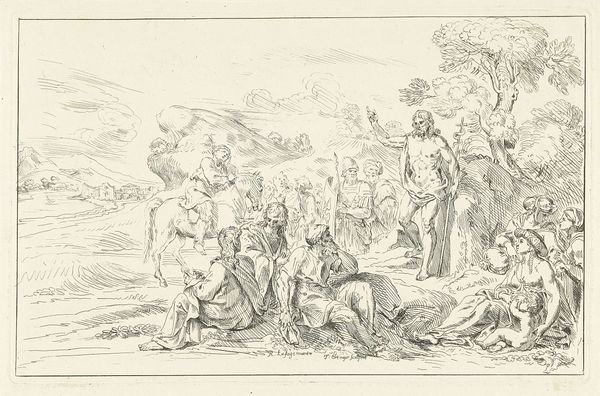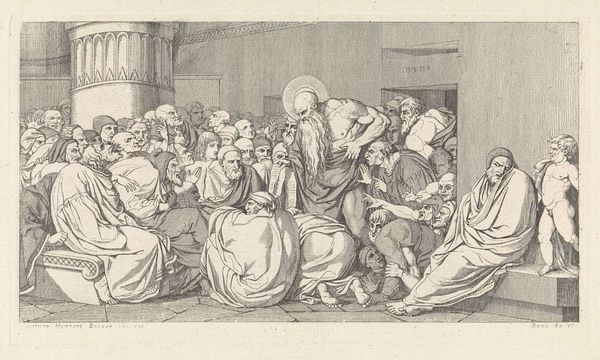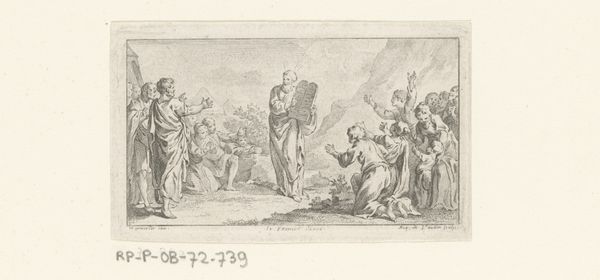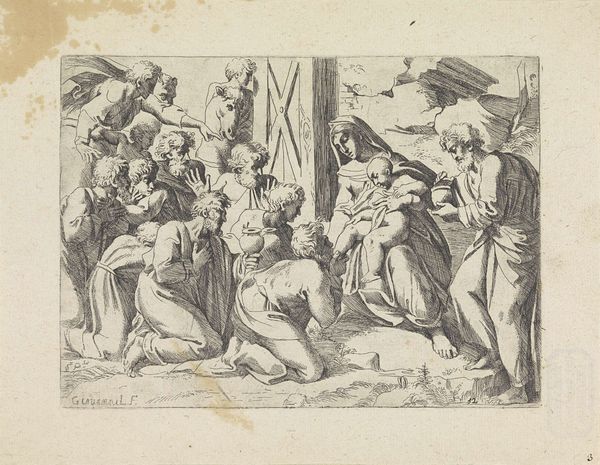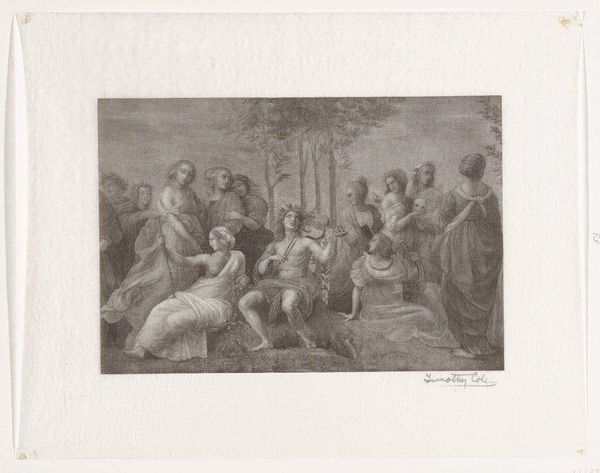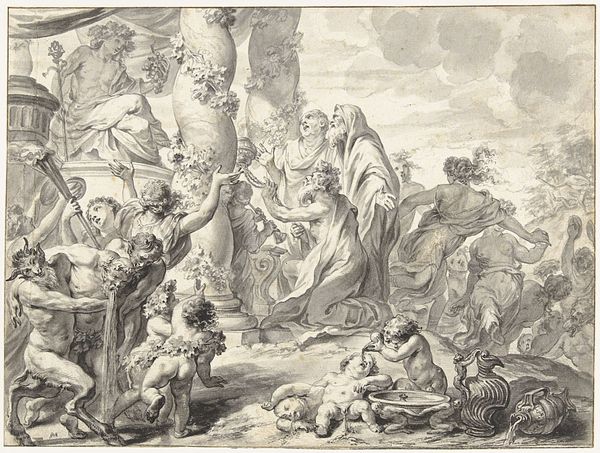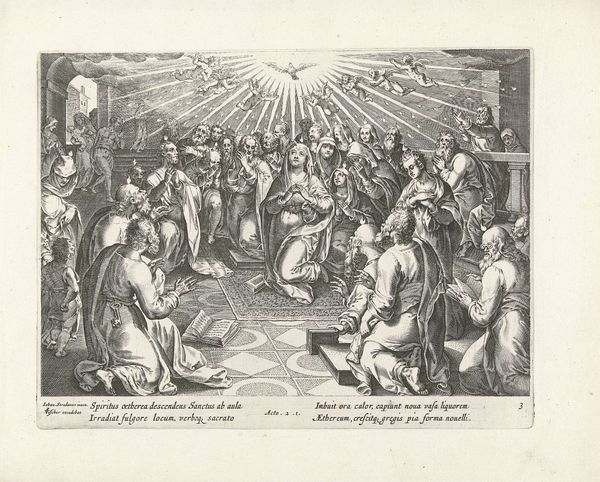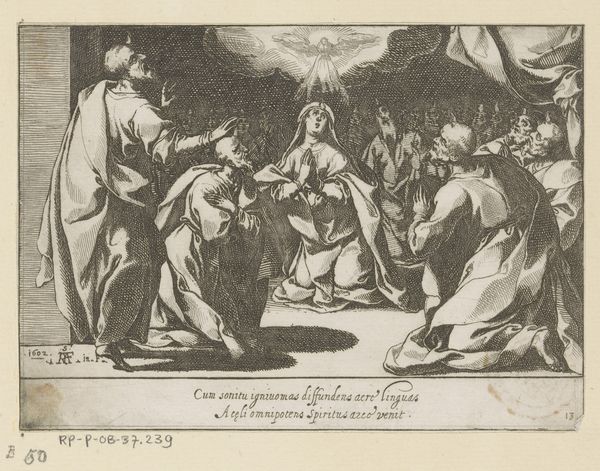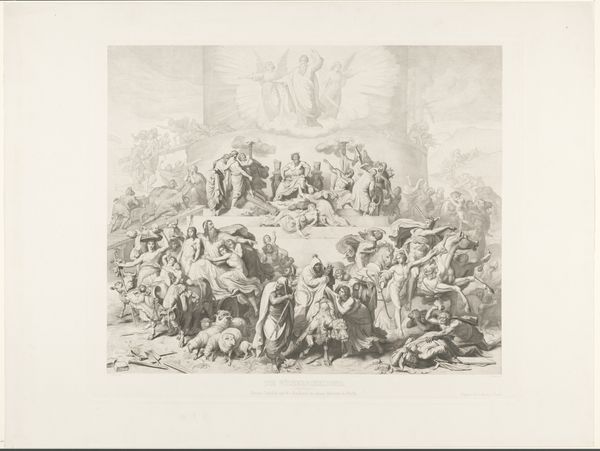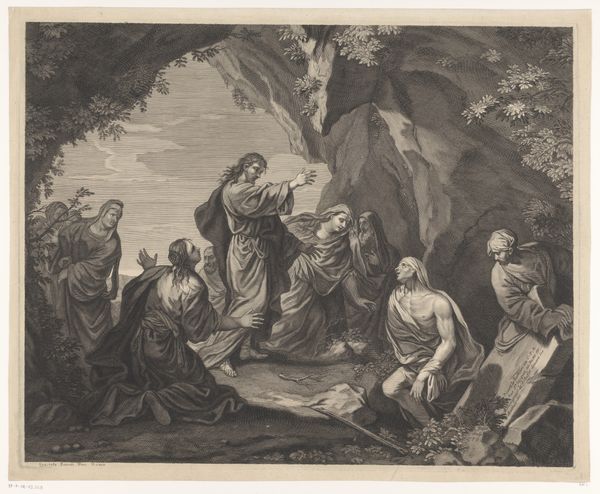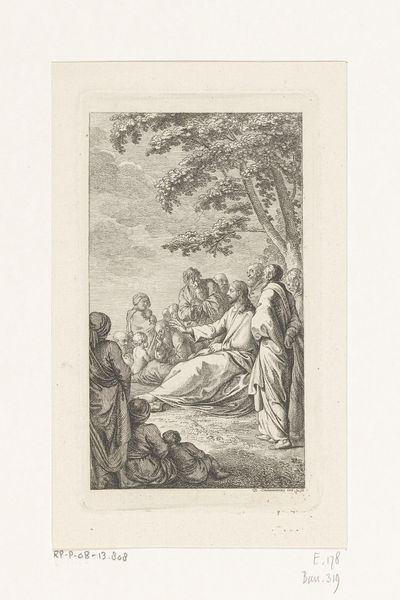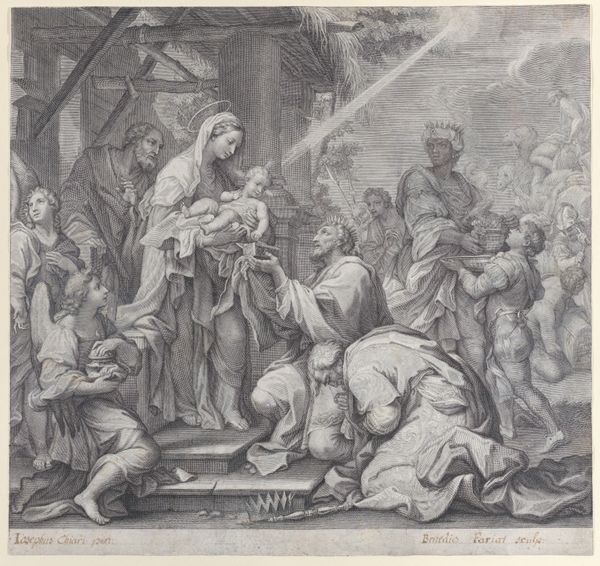
print, etching, ink, pen, engraving
#
baroque
# print
#
pen illustration
#
etching
#
old engraving style
#
figuration
#
ink
#
pen-ink sketch
#
pen
#
history-painting
#
engraving
Dimensions: height 64 mm, width 139 mm
Copyright: Rijks Museum: Open Domain
Curator: Let's turn our attention to "The Descent of the Holy Spirit," also known as Pentecost, a 1717 engraving by Bernard Picart. What are your initial thoughts on this work? Editor: My first impression is one of visual chaos, but somehow harmonized. There's a swirling sense of energy rendered with remarkable precision. It almost vibrates. What’s it made from? Curator: It's an engraving – primarily ink on paper. The Baroque style really emphasizes line and detail; you can see how Picart used etching to create these intricate, layered effects. The printing process itself would have demanded highly skilled labor, each pull from the press requiring consistent pressure and careful inking to reproduce the design. Editor: Indeed. It's the sheer number of figures, each individually delineated, that’s striking. Doves shower down, suggesting divine influence. What does it tell us about Picart's intentions with that image? Curator: Well, Pentecost commemorates the Holy Spirit descending upon the Apostles, empowering them to speak in different languages. The dove, of course, symbolizes the Holy Spirit, and those flickering flame-like forms hovering over each figure represent divine inspiration and revelation. Editor: So, a representation of instant communication, of bridging divides. Considering its era, and its status as a printed image distributed widely, there's an implicit argument for accessible faith. Also the image carries weight and it is full of symbolic load regarding the transmission of cultural memory. Curator: Precisely! Prints made religious narratives accessible in a way paintings in palaces simply weren't. Its materiality speaks to democratic availability. Moreover, think of the consumption context of religious prints at this time and how they shaped devotion for everyday people. Editor: I agree. Knowing how this artwork has been crafted by printmaking methods, and its cultural-historical background really helped to add new layers of meaning and create deep emotion with the picture's religious symbols. Curator: Absolutely. By analyzing the engraving from production point of view, combined with iconographic sensitivity, this artwork helps us connect the story with the cultural era, it does become a really vivid experience. Editor: Definitely. The artistic expression blends itself with spiritual and artistic history perfectly!
Comments
No comments
Be the first to comment and join the conversation on the ultimate creative platform.
